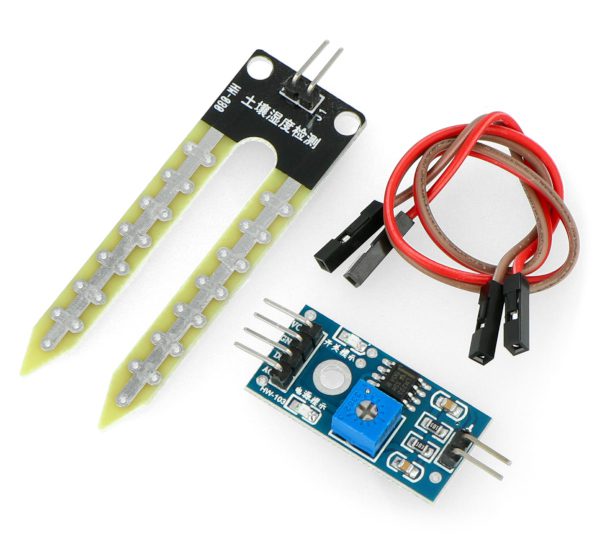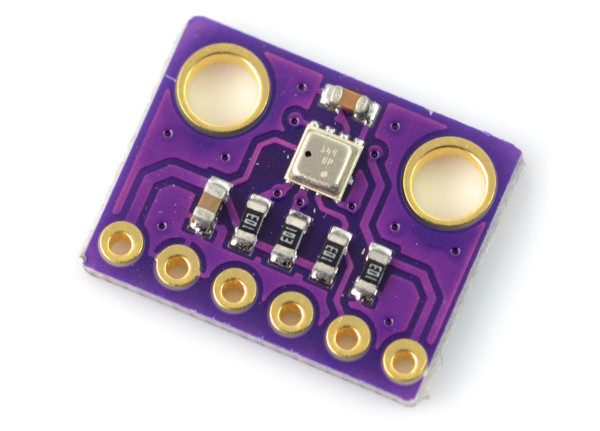Table of Contents:
Wondering what humidity sensors are and how they affect the comfort of your daily life? This article explains what these devices are, how they work and what situations they are used in. Learn about their types, operation and the advanced technologies they use. Read on to learn how to choose the right humidity sensor for your needs.
What exactly are humidity sensors?
Humidity sensors
are specialized devices that play a key role in monitoring and regulating environmental humidity. They are integral components of many systems, being widely used in sectors ranging from industry to meteorology to medicine. But what are these humidity sensors really?
A basic definition of moisture sensors informs that they are devices used to measure the amount of water in a given medium, be it air, soil or even a material. They convert moisture measurements into signals that can be read and interpreted. The characteristics of humidity sensors depend on their type and design, but common to all is the precision and reliability of measurements.
They use a variety of technologies, such as condensation, resistance and thermal, to accurately measure humidity and provide the most reliable data. Understanding what humidity sensors are allows you to take full advantage of their potential and helps you make informed decisions about regulating humidity in different environments.
Types of humidity sensors
Variety of
of moisture sensors
on the market can be overwhelming, but the key is to understand that each type has its own unique features and applications. There are two basic types of humidity sensors: relative humidity sensors and absolute humidity sensors.
Relative humidity sensors measure the state of moisture in a specific environment compared to the total maximum moisture content the air could have at a given pressure and temperature. These are the most widely used humidity sensors, used to monitor conditions inside buildings, greenhouses, grocery stores and even vehicles.
On the other hand, absolute humidity sensors measure the exact amount of water in a given medium, regardless of temperature or pressure.
Such sensors are often used in the food industry, pharmaceutical industry or in drying processes. Each type mentioned uses different technologies, such as resistive or thermal.
The selection of suitable humidity sensors depends on the specific application, the operating environment and the required level of accuracy and speed of measurement. No matter what purpose they are used for, humidity sensors play a key role in maintaining optimal conditions in various sectors and environments.
How humidity sensors work
The way the
humidity sensors
function depends on the type of technology used in the device. The first group is resistance sensors, whose operation is based on measuring the change in resistance under the influence of humidity. The materials used in these sensors show variation in resistance depending on the amount of water vapor absorbed, which allows interpretation and measurement of humidity.
Another is capillary sensors. In these devices, air humidity is measured by changes in capacitance of a capacitor, on which one of the hygroscopic dielectrics sucks moisture from the air, leading to a change in capacitance.
Other sensors base their operation on the measurement of thermal humidity, where the cooling time of air samples after they have been heated is directly proportional to the moisture content.
Moreover, some sensors use condensation technology, measuring the amount of condensed water. Regardless of the method, the accurate operation of humidity sensors is crucial to obtaining reliable and precise measurements, which in turn play an indispensable role in maintaining optimal conditions in various environments.
Examples of moisture sensor applications
Humidity sensors
are an indispensable part of many of the devices we use every day. For example, in air conditioning and ventilation, humidity sensors are a key component of control systems to ensure comfortable indoor conditions.
In the food industry, precision humidity sensors help monitor and maintain optimal storage conditions for products, which affects their quality and shelf life.
Another important area of application for these devices is medicine. Here, humidity sensors are used in neonatal incubators, respirators or artificial respiration apparatuses.
Precise humidity measurements are also key in the construction industry, where they are used to control air conditions and drying processes. These examples only vaguely illustrate the diverse applications of humidity sensors.
Current technological innovations are constantly expanding their potential applications, resulting in increasingly efficient and comfortable living in a wide variety of sectors.
Advanced humidity sensor technologies
Humidity sensors
also take advantage of the latest discoveries in the field of nanotechnology – we are increasingly dealing with nano-sensors, which, thanks to their small scale, are able to react quickly to even small changes in humidity.
In addition to miniaturization, advanced technologies in humidity sensors are also moving toward greater accuracy and speed of measurement. Some of the latest innovations in this field include the use of advanced polymers and ceramics that respond more accurately to changes in humidity levels, offering very high sensitivity and fast response times.
With these advances, humidity sensors are now more reliable and versatile, finding applications in a variety of sectors and environments. Continuously pushing the boundaries of technology, humidity sensors are playing an increasingly important role in many aspects of our daily lives.
Choosing the right humidity sensor
Choosing the right humidity sensor depends on many factors. First of all, it is worth paying attention to the specifics of the place where the device is to be used. If you’re looking for humidity sensors for a room, such as an apartment or office, precision and speed of measurement will be most important. In such a case, relative humidity sensors can be a good solution, and they perform well in such conditions.
On the other hand, if you plan to use the sensor in industry, for example, in drying processes, it is worth looking into absolute humidity sensors. These devices are designed to accurately measure water content, regardless of the prevailing temperature or pressure, which is essential in industry. In any case, the selection of a suitable humidity sensor should be made after a thoughtful analysis of needs and conditions.
How useful was this post?
Click on a star to rate it!
Average rating 0 / 5. Vote count: 0
No votes so far! Be the first to rate this post.





















